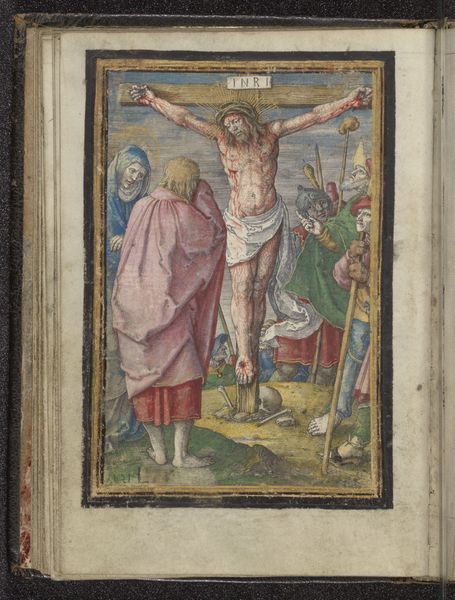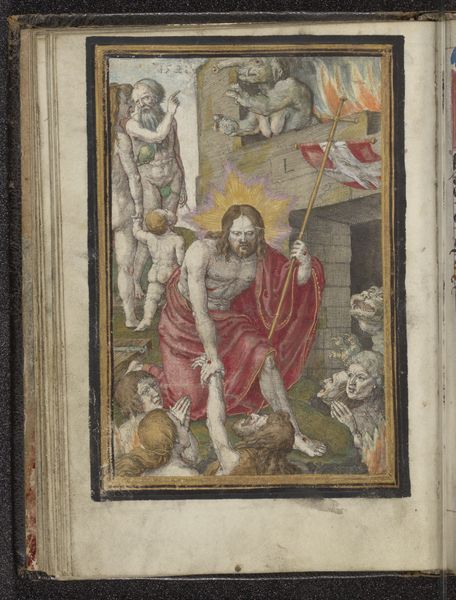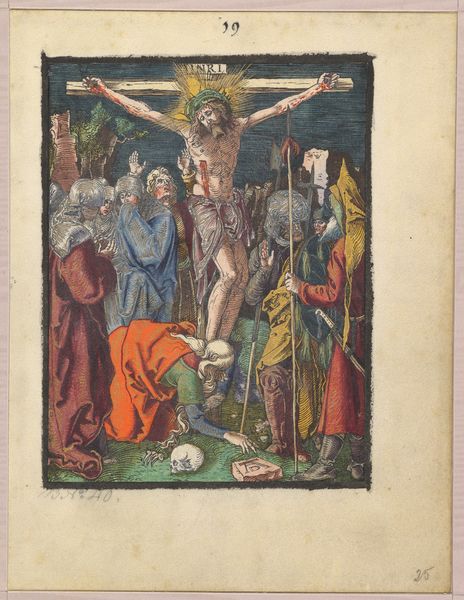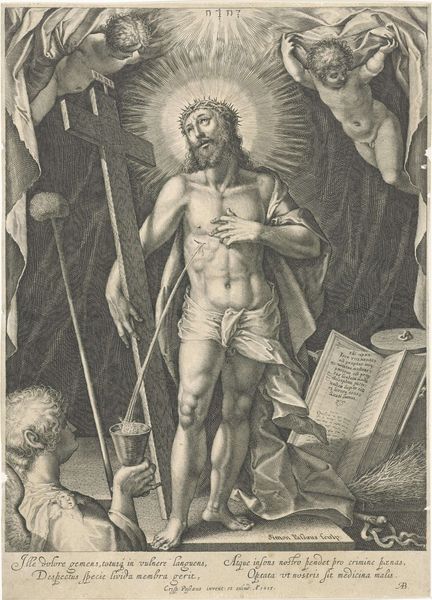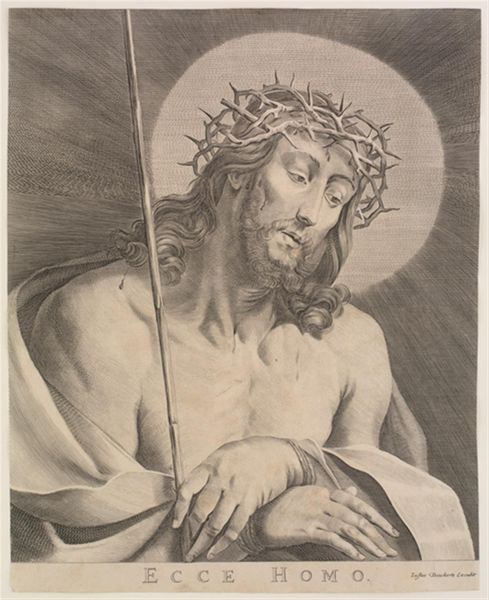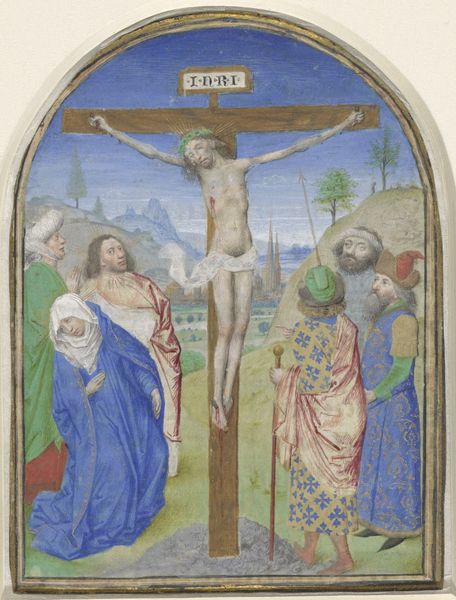
painting, print, paper, ink, engraving
#
portrait
#
narrative-art
#
painting
# print
#
figuration
#
paper
#
oil painting
#
ink
#
history-painting
#
academic-art
#
early-renaissance
#
engraving
Dimensions: height 149 mm, width 105 mm
Copyright: Rijks Museum: Open Domain
Editor: This engraving, "Christ as the Man of Sorrows" by Frans Crabbe van Espleghem, probably made sometime between 1497 and 1552, depicts a suffering Christ. It’s quite a powerful and moving image. What significance does a piece like this hold, especially considering its place in history? Curator: It's powerful, indeed. These images served a crucial function. We must consider the role of religious imagery in shaping social consciousness. This work is an engraving, meaning it's easily reproduced. What implications do you think the ready availability of this image might have had? Editor: I suppose a wide distribution could reinforce religious teachings among the masses and serve as a tool of indoctrination. Curator: Exactly! The Church employed these images to inspire piety but also to visually assert power and influence. It’s not just about faith, but also about control of visual narratives within society. Editor: So, how did the average person in that era engage with something like this? Was it solely within the context of the church? Curator: Not necessarily. While churches were a primary venue, such prints often circulated independently. People would purchase them for private devotion, pasting them into books, or displaying them at home. Consider the economics too - how did the print market intersect with societal class structures, accessibility, and education? Editor: I never considered the role economics might play in this! Now I see that it’s not *just* about the artist's intention but how those images were consumed and what impact they had. Curator: Precisely. Studying these works shows us the complex intersection of art, power, and public engagement, revealing how the visual language of faith can be wielded within specific cultural contexts. Editor: Thanks! This has opened my eyes to aspects beyond the aesthetic; it encourages a broader perspective of art’s societal implications during that period. Curator: That is why studying art is so rewarding – it reveals the intricate web of history woven within these visual representations.
Comments
rijksmuseum almost 2 years ago
⋮
Eighteen hand-coloured engravings are pasted onto the parchment pages in this book of hours. The combination of handwriting and coloured-in prints illustrates the gradual transition from the handwritten to the printed world. Christ’s suffering comes across more powerfully through the blood, applied in red wash with a fine brush, covering his entire body.
Join the conversation
Join millions of artists and users on Artera today and experience the ultimate creative platform.
